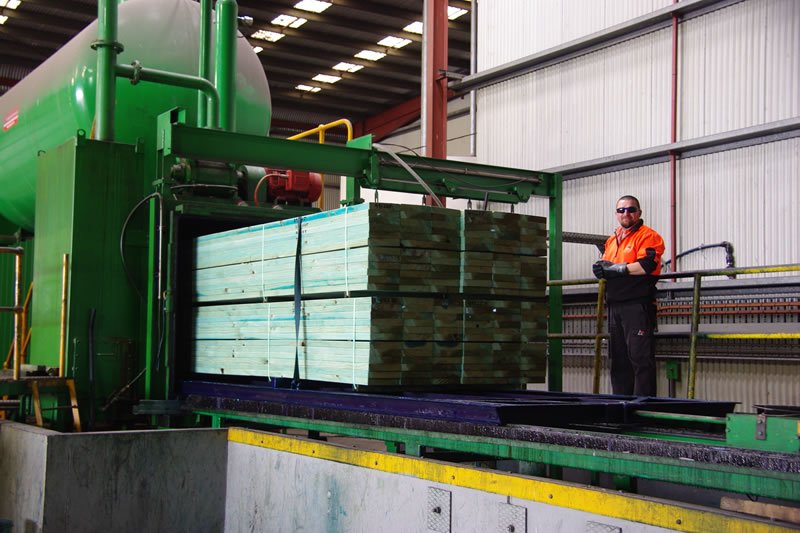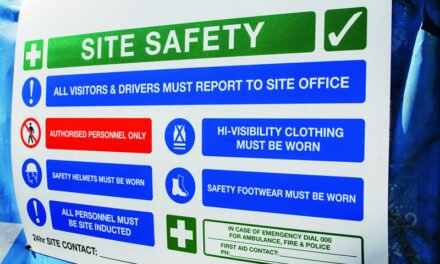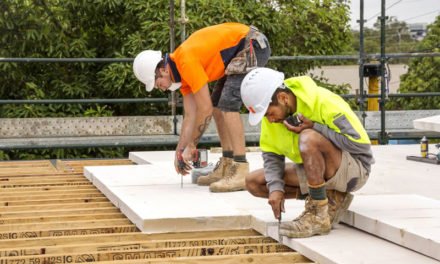Treatments are more specialised and sustainable than ever and thanks to new verification requirements, also more reliable. Learn more in this edited extract from our treatment special booklet.
Professor Jeffrey J Morrell, director of the National Centre for Timber Durability and Design Life at the University of the Sunshine Coast, studied Forest Biology, Plant Pathology, Forest Pathology and Mycology in the US. A 30+-year career in the field has seen him marry his interests in tree health with a commitment to getting the best out of timber once it’s harvested, so he is particularly focused on treated timbers.
“Most people, when they think of treated wood, they think of CCA,” says Morrell. “But that’s just a segment. We’ve moved far away from broadly toxic molecules that were very effective but had other issues and into much more refined chemistry.”
While the term ‘treated timber’ is used as a catch-all, in reality it encompasses many very different products. “We have very different preservatives for different needs,” says Dave Gover, general manager of R&D at AKD Softwoods. “Our H2F framing timber is treated with a spray-on termite deterrent. That same insecticide is commonly used in multiple other everyday applications including in the home and in farming, and that timber is used for framing pretty much anywhere south of the tropics.”
“Then for outdoor structural products like pergolas, decks, handrails or other above-ground, outside exposed structural applications, we have a LOSP-treated H3 product, typically in structural framing sizes, from 70mm to 290mm. In our landscaping product, the big one for us is the sleeper market. We do a lot. There’s two treatments we use there: common CCA or a micronised copper azole system that has a dye in it to give it an attractive reddish tint. It’s very popular in the landscape sector and that red colour is stable over time, it doesn’t change as it weathers.”
The copper-based treatment is particularly popular in applications where legislation bans CCA, including high human contact areas and kids’ play equipment.
“There’s more choice in treatments available now,” Gover says. “Part of the challenge for us is working out which choices we want to provide. And they have to work in the finished product, so we also have a bunch of process control that we apply to our production.”
Processes, ranging from the preparation of timber to concentrations of the preservative mixes and the levels of penetration and retention of chemical in the timber, are monitored and regularly tested.
“If we’re going to modify wood in a way that is intended to make it more durable, we need to make sure we’re actually doing what we say we are,” says Gover. “Then when someone takes that sleeper or piece of outdoor timber and uses it in the application it’s designed for, they can have confidence it will last the way it’s expected to.”
The suppliers aren’t alone in that focus on quality. Testing laboratories provide comprehensive support and the major chemical providers are active partners in keeping their customers on top of changing legislation and innovations.
“End of life is one of the key areas we’ve been focused on lately,” says Troy Justice, marketing specialist Oceania at LSI. “That was one of the drivers around the development of our Tanalith K product [a metal-free CCA alternative for outdoor products, used in Roundwood Solutions’ Tanapost range] that was launched last year.
“Now we’re relaunching Tanalith Q, which is an alkaline copper quarternary product to complement our well-established Tanalith E copper azole product. We’ve had it registered for a while, but not in production. To ensure we continue to address the needs of the treated timber market, we constantly re-evaluate our preservative products to see if they are offering the best outcome for our customers, including the issues around disposal of treated timber. The end of life code in Queensland allows ACQ-treated timber to be composted and we realised, ‘we have a couple of customers who can really benefit from this now,’ so we started manufacturing it locally.”
Disposal at end of product life has become a key concern for those in the treatment sector, with other parts of the timber industry following more slowly. “It’s one of the biggest issues for us at the moment,” says Nick Livanes, business development manager at Koppers Performance Chemicals, “along with the new treatment standards in Australia. AS1604 was completely revised earlier this year. It was a major undertaking; the old series which was partly Australia only and partly Australia/New Zealand is now a fully A/NZ set of standards for treating timber.
“It takes a long time to bring everyone up to speed whenever new standards come out. The biggest change is there are more and different requirements for how you verify you’re treating the timber properly.”
Koppers and LSI have both been working with the industry to educate on the changes in the standard, especially the new requirements for verification. “This is the whole part two of the Standard now,” Livanes says. ”It has three parts, the first one has essentially amalgamated all the requirements for what you treat to, the second one is verifying that you’re treating properly and the third one is the test methods.”
Proof of promise
The Standard’s emphasis on verification has two reasons behind it. The first, obviously, is that it’s important people get what they pay for, especially when they’re entrusting the safety of their house frame to treatment. The second is that the chemicals used in that treatment are used sparingly and are generally fairly benign – if you’re not a termite or borer – so it’s important to make sure they’re applied properly.
“Treatments used for framing contain very low levels of insecticides and there are treatments used for decking that are mostly organic,” Morrell says. “Many of them are the same chemicals we use on our skin. It would be useful to get people to try and understand that a little better. For example, the azoles, which are very popular in the decking market are also used for athlete’s foot control. The same specific mechanism works on the decay fungus and doesn’t allow it to produce cell walls or membranes, whether it’s on your skin on in your decking timbers.”
Just as fungal creams only work on your feet if you follow the instructions, timber treatment also needs to be applied in ways specific to the species and application. Independent testing laboratories like IVS Labs regularly test samples of product to make sure the right amount of the right treatment is being applied in the right way, and that all the manufacturing processes are working as they ought to be.
With offices in Hamilton, New Zealand and a testing lab in Brisbane, the company has an excellent understanding of AS 1604.
“We test for anyone and everyone who requires it,” says Christina Pegler, technical manager at IVS Labs. “The new standard does have its interesting updates – they require a lot more people to be doing timber preservative testing, so for us it’s about being available. We’ve seen a lot more enquiries around the testing of local and imported timber since the new standard has come out. Our general turnaround time is between three and five days.”
As well as providing testing for suppliers, IVS can test new products coming into the Australian or New Zealand markets and give would-be importers a number in terms of the degree or amount of preservative in that particular timber and whether it’s likely to meet A/NZ standards. “The power of this isn’t well understood yet at the retail level,” says Peter Webb, chief executive, IVS Group. “Certainly, the Timber Preservers Association of Australia (TPAA, www.tpaa.com.au) has been quite good at promoting verification and providing a degree of education for treaters, but the availability of a test just to check that products are meeting Australian standards hasn’t been widely known at the retail level. And that’s both in terms of the hardware store selling to the construction sector and also to the retail/DIY market.
“Where we do see better understanding is in government procurement. Many of those contracts specifically require verification against the standard.”
Webb suggests that this is a role for industry organisations, particularly working with builders. “Timber Queensland has been active in trying to ensure that everyone in the supply chain understands their responsibility,” Webb says. “But I think we all have a bit of work to do to make sure the responsibility flows right through. The more information we can get out there the better, and the more suppliers can understand how they can show they are verifying the outcome of their treatment, the better for everyone.”
As a New Zealander, Webb has seen what happens when standards, building practice and verification don’t align.
“We had the leaky homes saga in NZ back around 2000,” he says. “That drove a very strong and immediate push to ensure that treatment was all verified. It’s now required under the building standards in NZ that there is a quality program in place and verification. That’s really changed how New Zealand deals with quality marks and verification; now the minimum standard is one that is verified and run under a quality system.”
Unfortunately, the Australian market isn’t at the same place. While there is a lot of excellence in both timber and chemical suppliers, for the most part, Webb says, “People don’t have a great deal of understanding of timber and the variability of current treatments. What we’re seeing is that people have historically been buying on price rather than on quality. Without some clear quality marks, it’s been difficult for those doing it very well to get any sort of premium in the market. So historically, it’s been almost a race to the bottom as far as pricing. And that sort of market isn’t driving a quality product.”
Webb says Australia is getting there. “Progress is slow, but it takes time when you take a whole industry with you. You can’t take pieces of a supply chain to a different level, the whole supply chain needs to understand and move together in lockstep around quality away from a price-driven procurement to a quality-driven procurement.”
For the full story, download the Timber Treatment Special here. For more on the above, visit www.akd.com.au, www.ivaslabs.com.au, https://koppers.com.au, www.lonzawoodprotection.com/APAC, and www.usc.edu.au/research/forest-research-institute/national-centre-for-timber-durability-and-design-life











